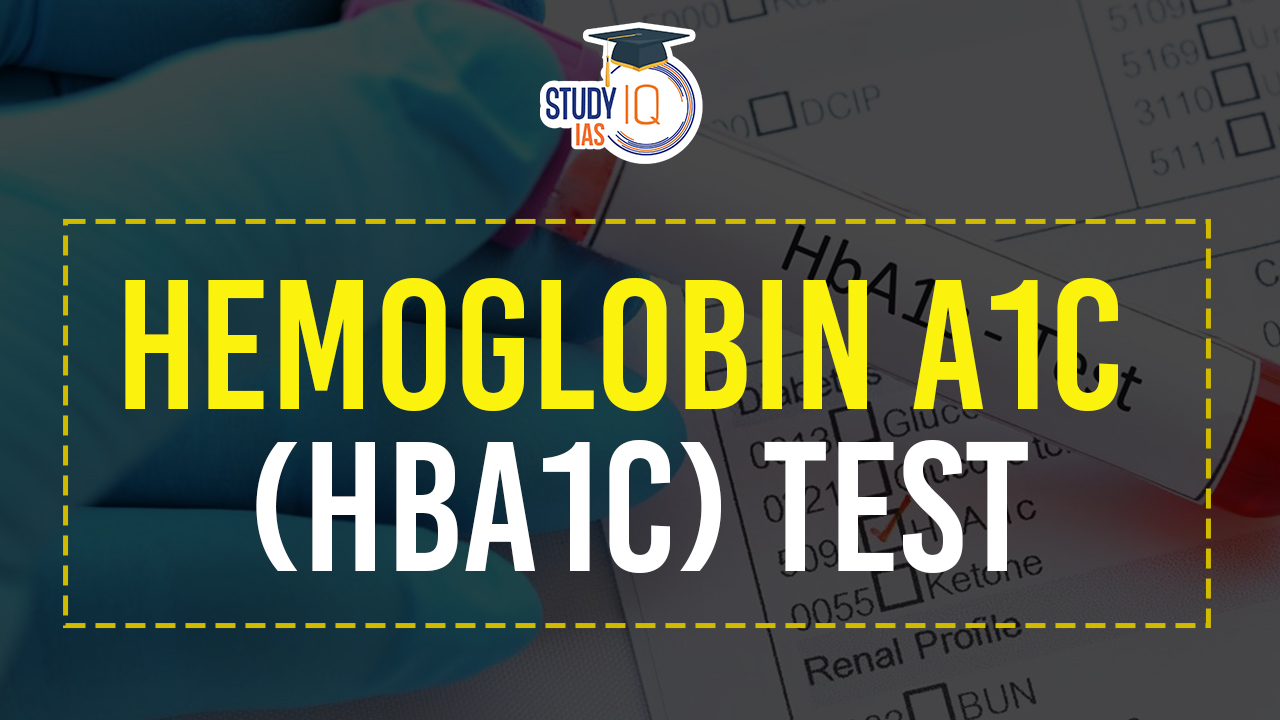Table of Contents
Context: According to a nationwide study published in 2023, India’s population of individuals with diabetes is estimated at 101.3 million, with an additional 136 million categorised as pre-diabetic.
HbA1C Test: A Key Tool for Diabetes Management
- What it is: A blood test to diagnose pre-diabetes, and diabetes (type 1 and type 2), and monitor diabetes management
- How it works: Measures the percentage of red blood cells with sugar-coated haemoglobin (HbA1C)
- Why it’s used for diabetes: Reflects average blood sugar levels over 2-3 months, unlike blood sugar tests that give a snapshot.
| Facts |
|
HbA1C Test Results and Interpretation
- Results provided as a percentage or mmol/mol
- Normal HbA1C level: Below 5.7%
- Pre-diabetic range: 5.7% to 6.4%
- Diabetic range: 6.5% or higher
- Factors affecting test results: Kidney or liver problems, blood disorders, pregnancy, certain medications
Who Needs the HbA1C Test and When
- Recommended for all adults above 30 years old
- Earlier screening is advised for people with risk factors like obesity, high blood pressure, heart disease
- Retesting frequency: Every 3 years for normal results, annually for pre-diabetes, more frequently during pregnancy
- For diagnosed diabetes: Every 3-6 months to monitor blood sugar control and treatment effectiveness
We’re now on WhatsApp. Click to Join
HbA1C Test vs. Other Blood Sugar Tests
- HbA1C vs. Fasting/post-meal blood sugar tests: HbA1C reflects average blood sugar over time, not dependent on recent meals
- HbA1C complements, not replaces, other tests and regular blood sugar monitoring
Limitations of the HbA1C Test
- Not a standalone test, may be used with other tests for diagnosis
- Doesn’t capture blood sugar spikes or dips throughout the day
- Less sensitive in certain conditions (anaemia, genetic variations) – may require additional glucose tests for diagnosis
- In India, test accuracy may be affected by factors like iron deficiency and haemoglobin variants
Measures to Tackle Diabetes in India
- Prioritise Prevention: Public awareness campaigns promoting healthy lifestyles to prevent pre-diabetes from progressing to diabetes.
- Focus on Early Detection: Regular screenings, especially for high-risk individuals, to identify new cases and enable early intervention.
- Lifestyle Modifications: Encourage a healthy diet, sufficient exercise, and regular blood sugar monitoring to maintain good control.
- Address Regional Disparities: Implement preventive measures in both urban and rural areas, considering the shift towards modern lifestyles.


 Topological Materials: The Future of Qua...
Topological Materials: The Future of Qua...
 China’s Deep Sea Station in South Chin...
China’s Deep Sea Station in South Chin...
 Project ICE-CRUNCH: India-Switzerland Co...
Project ICE-CRUNCH: India-Switzerland Co...





















